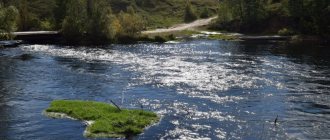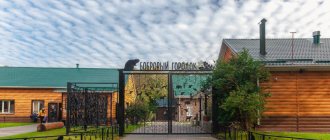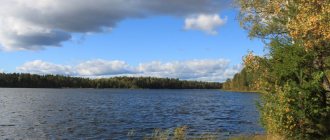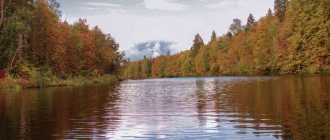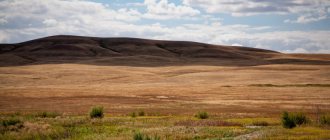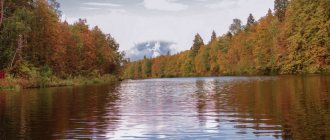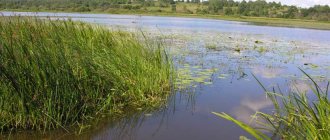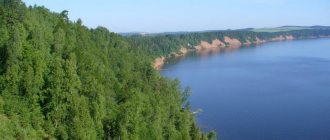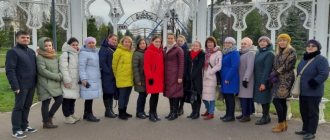| First day Second day Museums of Astrakhan Stories, routes and tips from tourists with photos Where to stay in Astrakhan Excursions from Astrakhan for 2 days |
Multinational and colorful Astrakhan attracts tourists with an abundance of architectural and natural attractions. People come to the city on the Volga and Caspian Sea not only for gastronomic experiences, but also to immerse themselves in the rich history of the oldest cultural center of the Lower Volga region.
It’s quite possible to see Astrakhan in 2 days. You will see not only top attractions like the Kremlin, but also atmospheric settlements where merchants from Central Asia and the Middle East lived in previous centuries. The program of what a tourist should see in 2 days in Astrakhan includes a river walk along the Volga and a visit to an authentic market with fish and watermelons. In order to have time to see Astrakhan from different angles, it is worth wisely planning your route for 2 days.
Lenin Square Photo: © Vladimir Shalaev
TOP 5 most interesting places in the Astrakhan region
A journey through the Astrakhan region will be especially vivid and memorable if you start it from the coast of the Caspian Sea, the biosphere reserve and the main treasures of the Bogdinsko-Baskunchaksky Nature Reserve - Mount Bolshoye Bogdo and Lake Baskunchak. Along the way, tourists should visit the artificial city of Saray-Batu, one of the most spectacular attractions created by human hands.
Caspian Sea
- Coordinates on the map: 45.627749, 48.986745.
In the southeast, the Astrakhan region borders the largest lake in the world, which is called the sea due to its incredible size. The Caspian Sea is in many ways inferior to the Black Sea resorts, but they are also popular among vacationers.
The shore of the Caspian Sea is covered with coarse golden sand; in the summer the water warms up to 26 °C. Several recreation centers have been built on the coast, which operate all year round and offer tourists all the conditions for passive and active recreation.
Astrakhan Biosphere Reserve
- Address: Kamyzyaksky district, Damchik village.
The region's most extensive reserve was founded in April 1919, but received the status of a natural site of national importance only in November 1927. The natural reserve with an area of almost 68,000 hectares covers the territories of three districts:
- Ikryaninsky,
- Kamyzyaksky,
- Volodarsky.
The protected area is home to 17 species of mammals and 280 species of birds, including the endangered little cormorants, Egyptian herons, Dalmatian pelicans and the rare white cranes. Dozens of fish species live in rivers and reservoirs: sturgeon, stellate sturgeon, carp, chub, herring, beluga, bream, asp, pike perch, pike and many others.
The value of Astrakhan nature is recognized internationally; in 1984, the reserve was included in the World Network of Biosphere Reserves.
Mount Big Bogdo
- GPS coordinates: 48.144200, 46.856681.
The indescribably beautiful mountain Big Bogdo is the heart of the Astrakhan region. The amazing peak is actually a large hill, but its 150-meter height makes it the highest point of the entire Caspian lowland. The name of the mountain comes from the Kalmyk “Bogdo-uul”, which translated into Russian means “holy”. The slopes of the hill are dotted with numerous caves, grottoes, and funnels.
Scientists first became interested in the peak in 1769. In 1926, the mountain was explored by the future science fiction writer Ivan Efremov. The expedition of the 19-year-old boy subsequently formed the basis of his story “White Horn”.
Big Bogdo is the edge of the so-called salt dome. Since the dome continues to protrude outward, the mountain grows along with it: every year its height increases by about one millimeter. The Red Slopes are the only place in the country where the squeaky gecko lives. Kalmyk Buddhists consider the hill a sacred place and periodically make pilgrimages to it.
Lake Baskunchak
- Coordinates: 48.201701, 46.887530.
At the foot of the Big Bogdo lies the most famous and largest salt lake in the region - Baskunchak, which means “sunny” in Turkic. The reservoir is located on the top of a salt mountain, extending several kilometers deep into the earth. Baskunchak itself is quite shallow, its maximum depth is 3 meters.
The length of the reservoir is 18 kilometers, width - 13 kilometers. Only one river flows into the lake with the telling name Gorkaya Rechka. The only river, which also partially dries up, is not capable of replenishing the lake with water alone; it is mainly fed by 25 springs located on the northwestern bank of Baskunchak.
Salt has been mined on the reservoir since the 8th century. In the Middle Ages, amazingly pure salt was in demand not only in Rus', but also in overseas countries; the valuable product was sent for sale along the famous Silk Road. The concentration of salts in the lake is so high that the water easily holds the bodies of people and objects on the surface.
In Soviet times, racing cars were even held here to set speed records. Nowadays, the lake produces 80% of all salt mined in Russia. The reservoir is also famous for its healing brine and deposits of medicinal clays. In the summer, tourists from all over the country come to Baskunchak; vacationers take mud baths and swim in salt water.
Saray-Batu
- Coordinates: 47.238519, 47.373263.
The eyes of travelers heading to Astrakhan through the village of Tambovka are presented with an unexpected picture that can easily be mistaken for a desert mirage. In the middle of the steppe and sand dunes, an ancient settlement with adobe houses grows.
The eastern city is not a historical monument at all, but a large-scale set for the film “The Horde,” filmed in 2011. The filmmakers' creation recreates the disappeared Golden Horde capital of Sarai-Batu. After filming ended, the scenery turned into an open-air museum and a new landmark of the Astrakhan region.
Cafes, restaurants
There are many food establishments in Astrakhan, you can find different cuisines of the world and different price categories. The following places deserve special attention:
- cafe Rosemary, La Vanile, Shokoladnitsa, Pretzel, Falafel, Cutlet, Volga Street, Dair, Contrast Provence, Chaikofsky;
- fine dining restaurants Shchuka, Trapeza, Volga-Volga;
- local cuisine in the restaurants Izba, Poplavok, Almond, Shinok Lapti;
- seafood at PastaPizza, Wine and Crabs, Sharlau, Sloboda on Marfinskaya;
- Japanese cuisine in Cream Cafe, Spices, Bar House, Yamato, EurAsia, Kuk-si Kabi, Japan, Shiyama, Kuroshio, Sushitos;
- Chinese cuisine in Beijing, Papa Po, Eurasia;
- Italian menu at Crystal Coffee House, Camorra Pizza e Birra, Pio Pizza, Pecorino, Parasole, Yes! Pizza, Cult Cafe, Caesar Pizza, Celentano, Orange Cafe, Ricco, Pita's;
- fast food at Subway, Burger club, Soup Station, McDonald's, VERY TASTY.
For more information about the city of Astrakhan and its interesting places, watch the following video:
All this information will allow you to create the optimal tourist route for every taste. You can relax and have fun in Astrakhan not only in a variety of ways, but also inexpensively. The listed objects are the most popular in the city, but the options for spending time are not limited to them.
Astrakhan nature reserves and sanctuaries
Astrakhan nature is diverse and priceless, therefore, various landscape, botanical, zoological and complex reserves were created to protect it.
Bogdinsko-Baskunchaksky Nature Reserve
- Coordinates: 48.197646, 46.982264.
The second nature reserve of the Astrakhan region was organized in the vicinity of the Bolshoye Bogdo mountain-hill and the unique salt lake Baskunchak. In 1993, a reserve of the same name with an area of 53,700 hectares was created on the border with Kazakhstan. Later, in 1997, a state nature reserve was established on a plot of land covering more than 18,000 hectares.
In addition to the mountain and the lake, the young reserve included karst fields, the Sharbulak tract, the Green Garden oasis of forest vegetation, as well as numerous caves and sinkholes.
The flora and fauna of the protected area is diverse and incredibly valuable from a scientific point of view; many species of birds, mammals and plants are listed in the Russian Red Book and the International Red Book. Some specimens are endemic, meaning they live in only one place on the planet.
Ilmenno-Bugrovoy reserve
- Coordinates: 46.183333, 47.600000.
A large reserve was founded in 1995 on the lands of the Narimanovsky and Ikryaninsky districts. The area of the protected area is 6,700 hectares. A unique feature of the local landscape is the Baer mounds, whose length reaches 20 kilometers and width - 800 meters.
Huge sandy-clayey hills gave the reserve part of its name - “Bugrovoy”. The first part of the name, “Ilmenno”, comes from the numerous ilmens - salt and freshwater lakes.
The main goal of the reserve is to protect the unique natural complexes of the Caspian region, as well as to preserve rare bird species in their natural habitat. The protected area is home to 40 species of mammals and 200 species of birds, including Dalmatian pelican; More than 300 plant species are found. Scientific delegations regularly come to the reserve, and students from various universities also do internships here.
Burley Sands Nature Reserve
- Coordinates: 47.550000, 47.266667.
A small landscape reserve in the Kharabalinsky district was created in 1998. The reserve was designed to preserve a unique complex of northern deserts - the natural habitat of many reptiles.
Rare reptiles are found in the Burley Sands; experts pay special attention to such species as:
- patterned runner,
- multi-colored foot and mouth disease,
- fast foot and mouth disease,
- eared roundhead,
- steppe viper,
- nimble lizard,
- roundhead-twirlytail.
Any activity that may change the landscape of the area or harm flora and fauna is prohibited on the territory.
Reserve "Stepnoy"
- Coordinates: 45.763432, 47.074416.
A huge reserve with an area of more than 109,000 hectares was formed relatively recently - in 2000. The territory was taken under protection in order to preserve a unique area of the feather grass steppe and save saigas, steppe eagles, imperial eagles, black vultures and other birds and animals on the verge of extinction from complete destruction. Ecotourists are allowed to observe the beautiful inhabitants of the steppe from afar.
Reserve "Enotaevsky"
Photo: © https://yandex.ru/maps/-/CCUUVCRC1A
- Coordinates: 47.247941, 47.060115.
The biological reserve in the Enotaevsky district is one of the oldest in the Astrakhan region, it was founded in 1986. Part of the protected area is on the islands. The reserve's specialists are trying to preserve and reproduce the number of mammals and birds that have suffered from human activity and the hands of poachers:
- roe deer,
- pheasant,
- gray partridge,
- deer and others.
Tourists are prohibited from hunting, fishing, destroying nests, or otherwise harming local animals or their habitat.
Reserve "Kabaniy"
Photo: © https://yandex.ru/maps/-/CCUUVCf2GD
- Coordinates: 47.316667, 47.016667.
The name of the second reserve of the Enotaevsky district speaks for itself: its main goal was to preserve the wild boar population. The protected area was organized in 1991, and currently its area is more than 2,600 hectares.
"Boar" covers several islands of the Volga-Akhtuba floodplain. In addition to wild boars, the reserve is home to red deer, brown hare, gray partridge, pheasant, roe deer and waterfowl.
The first day
Let's fly! Recently, I got seats A or B, I looked with envy at my neighbor’s window and got up with irritation to let people who liked to walk around the plane pass. But it turned out that when checking in for a flight, you can simply ask for a seat “by the window.” And it worked! We managed to see the Don (it’s really beautiful from above), the Anninsky Fortress, yellow and green patches of fields. These landscapes alone were worth the flight.
The airline also surprised us by expanding the range of free drinks on board: Mirinda, 7Up and Pepsi were added to the usual “with or without gas”.
An hour and twenty in flight passed unnoticed, and now we landed at Narimanovo airport.
Something went wrong with Yandex Taxi, I had to call a local taxi. About 5 minutes later a white Renault Logan arrived. The driver, apparently an introvert, had to answer my numerous questions about Astrakhan attractions. The journey took 15 minutes, the cost of the trip was 200 rubles.
The windows of my room overlooked the embankment (there are about 20 of them in the city), and the first night at the hotel was memorable for the annoying mosquitoes.
I would like to note right away that my expectations for the hotel turned out to be very high. The bed is more likely for 1.5 people, not 2. Of course, no slippers are provided. Shower and toilet were provided for 2 rooms (no one lived in the next room), there was no talk of any shampoos, there was not even hand soap!
But when I safely left their little green towel on the beach (which I honestly admitted), they wanted to charge me 1,500 rubles. But the staff showed sympathy, and I paid only 300, and on the last day I was allowed to store my things until the evening.
Astrakhan region: its rivers and reservoirs
There are a huge number of rivers and reservoirs in the region; every tourist will find something special for themselves among the water resources of the region. Those wishing to improve their health should pay attention to the salt lakes Tinaki and Mramornoe. Fishermen will enjoy the region's most fishing spots - the Volga Delta and the Akhtuba River. And lovers of unusual places will definitely be impressed by Gorkaya Rechka.
Lake Tinaki
- Coordinates: 46.409432, 47.936466.
Salt Lake Tinaki is not as famous as its big brother Baskunchak, but it also does not deserve the attention of tourists. A small shallow reservoir is lost among the high Berov hillocks of the Narimanov region. The water level in Tinaki is constantly changing, in summer the depth barely reaches one meter, and in dry years the lake practically dries up.
Due to its unusual composition, the water takes on a pink tint in summer. The name of the reservoir, according to one version, comes from the word “mud,” since the shores of the lake are covered with dark, strong-smelling mud, similar to mud.
Sulfide-silt mud, like brine, has healing properties. The Bakhchisarai khans used the gifts of Tinaki already in the 15th century. In the 19th century, a balneological resort was organized on the shore of the reservoir. In 1820, a mud sanatorium was built for vacationers and the sick. Treatment methods were improved, and the popularity of mud baths grew every year. The resort still exists today.
Marble Lake
- Coordinates: 48.203032, 46.795479.
A strikingly beautiful reservoir was formed near the village of Nizhny Baskunchak on the site of a gypsum quarry. The high walls and islands of white gypsum look like marble from afar, which is why local residents nicknamed the pond Marble.
After the quarry was blown up, underground fresh springs were flooded, which, having passed through salty rocks, also became salty, like sea water. The blue pond among the white rocks began to attract tourists, but soon the area lost its spectacular attraction.
In 1998, the gypsum quarries became the property of the German concern Knauf, and the new owner closed access to its territory. Only once a year, on Builder’s Day, local residents and tourists are allowed to swim in Marmara Lake, and hundreds of vacationers gather on the shores of the reservoir.
Volga Delta
- Coordinates: 45.988227, 47.868418.
The mighty full-flowing Volga River pierces the Astrakhan region from the northwest to the southeast, dividing the region into two unequal parts. A few kilometers before it flows into the Caspian Sea, the river divides into many branches, forming a delta.
The Volga Delta is a valuable place both from the point of view of science and from the point of view of tourism, therefore it has a special environmental status. The banks are home to hundreds of plants, including rare species, and countless birds. Some birds live in the delta area permanently, others stop during the migration period.
But the main treasure of the Volga is fish; the river has fed coastal settlements and even neighboring regions since ancient times. Fishing spots in the Astrakhan region are considered one of the best in Russia, and hunting for catches continues in the Volga delta all year round.
Akhtuba River
- Coordinates: 47.856126, 46.561622.
A well-known and popular river among fishermen flows from the Volga near the city of Volzhsky and flows into the Buzan River near the village of Krasny Yar. The modern name of the river comes from the Tatar phrase “ak-tyube”, which is translated into Russian as “white hill”.
There are several cities on the banks of the Akhtuba, including Akhtubinsk. In the northern part, in the Volga-Akhtuba floodplain, there are endless fertile fields and melon fields. The generous river is rich in fish; every year thousands of fishermen come here from all over Russia, attracted by the large catch.
Gorkaya Rechka
- Coordinates: 48.213128, 46.956090.
The surroundings of Lake Baskunchak look like scenes from a science fiction film or landscapes from another planet. Among the low hills, on the ground white with salt, flows a stream of surprisingly bright red-orange water. The water in the “Martian” river has a bitter-salty taste, hence the name of the reservoir – Gorkaya Rechka.
The river acquires an incredible color in the summer, when salt water reacts with bacteria under the influence of sunlight. The striking feature of the Gorkaya Rechka does not scare away the birds; the birds calmly build nests on the banks of the blood-red stream and hatch their chicks.
Where to stay in Astrakhan
Housing offers in Astrakhan are found throughout the city, but the White City - the historical center or areas near it - will be convenient and pleasant for tourists. The neighborhoods within the boundaries of the Volga, the Varvatsia Canal and the Kutum River are home to the Astrakhan Kremlin, the Brotherhood's Garden, many museums and ancient mansions. The best 4 and 5 star hotels in the city are also located here. There are few private offers in the very heart of the city; there is more choice in the rest of the city.
An excellent option for the summer is housing on the banks of the Volga, everyone will notice its wonderful view from the window. In addition to apartments, these include the Azimut and Grand Hotel Astrakhan hotels.
- Astrakhan Hotels
- Hostels for Budget Travelers
- Flats and apartments
- Guest houses in Astrakhan
Before booking your stay on Booking.com, take a look at the page: Cashback promotion for Tourist. RU
Astrakhan Local Lore Museum Photo: © vladkonst
Unusually beautiful places in the region
Astrakhan knows how to truly surprise. In different parts of the region there are unique plantings that you would not expect to see in the Russian region.
Lotus fields
- Coordinates: 45.825533, 47.777567.
The most beautiful natural attraction of the region can be seen only once a year near the village of Liman. Between mid-July and mid-September, the river waters are covered with a huge colorful board of blooming lotuses.
The air is filled with the aroma of soft pink relict flowers, and the surface of the river becomes green from huge leaves reaching one meter in diameter.
The delightful landscape attracts travelers; excursions to the “Caspian Rose” valley are in great demand. Picking flowers listed in the Red Book is strictly prohibited, so guests of the valley can only admire the plants from a distance.
Tract Cordon
- Coordinates: 47.392000, 47.850600.
In the Kharabalinsky district, among the fields and melons, hides an unusual plantation, where not the usual watermelons or grain crops grown in Astrakhan, but large desert cacti. The Cordon tract is a natural habitat for the prickly pear cactus.
The exotic plant was planted in these places in 1904-1917 and since then every spring it delights people with large yellow and pink flowers. The prickly old-timers stand out against the background of the Astrakhan steppe and seem to be aliens from distant Mexico. In 1995, the tract was recognized as a natural monument.
Oryol forest
- Coordinates: 47.483333, 47.166667.
The terrain in the Astrakhan region is predominantly steppe or desert, so each area where trees grow is of special importance.
One of these places is the Oryol Forest, located 15 kilometers from the city of Kharabali. The natural monument was named after its creator, the forester Mitrofan Orlov, who proposed planting a forest in order to stop the advancing sands. The tract was laid out at the beginning of the 20th century; over the past hundred years it has grown into a large forest.
In the Oryol Forest there are trees atypical for the local climate: poplars, ash trees, maples. The age of some trees reaches 70 years.
Churkinsky Monastery
- Address: Volodarsky district, village. Churkin.
Near the village of Churkin, the ancient Assumption-Nicholas Monastery has been preserved, but ecotourists are attracted not by the shrines of the reviving monastery, but by the small poplar grove of the same name.
The trees, unusual for Astrakhan, are up to 60 years old. In 1993, Astrakhan specialists proposed creating a natural monument called the Churkinsky Monastery, but the regional administration did not support their initiative.
Stories, routes and tips from tourists with photos
What to see from the sights of Astrakhan in 2 days is a must, and what is not worth attention - you will find tips in the reviews of tourists. Travelers share their honest impressions of the city and its tourist attractions. In reviews, tourists write about unusual locations in the city, tell how to plan a route by the hour and where to spend leisure time. From tourists' reports you will learn where to buy branded Astrakhan souvenirs more profitably and where you can try local cuisine at an affordable price.
- “Shall we take a walk around Astrakhan?” — photo album from Vladimir.
- “Travel from Volgograd to Astrakhan...” - a report from Vladimir about a trip to Astrakhan during the May holidays.
- “Astrakhan Sketches”: day 1 and day 2 - a series of reports from Sergei Makhinin.
All reviews about trips to Astrakhan
Photo: © Sergey Makhinin
Archeological and historical monuments
Astrakhan is a region with a long history. Hidden under its sands are ancient civilizations, rich cities, destroyed by time and natural elements.
Samosdelskoye settlement
- Coordinates: 46.025556, 47.840556.
The famous archeological monument is located in the Kamyzyaksky district near the village of Samosdelka. Here, on the banks of the Old Volga, scientists have discovered the remains of three disappeared medieval settlements. The most ancient, Khazar, arose in the 9-10 centuries; historians suggest that it was the famous Itil - the last capital of the Khazar Kaganate.
In its place in the 11th-12th centuries, in pre-Mongol times, the trading city of Saksin, or Sajsin, grew up. The latest settlement dates back to the 13th-14th centuries, that is, to the times of the Golden Horde.
Samosdel ruins began to be studied for the first time in 1898. Almost a century later, in 1989, the village teacher Alexander Anatolyevich Pukhov collected an impressive collection of ceramics from the 9-10th centuries near the river and transferred it to the State Directorate for the Protection of Historical and Cultural Heritage. Experts became interested in the finds, assembled an expedition and began excavations at the site of the ancient settlement. Research is still ongoing.
Selitrennoye settlement
- Coordinates: 47.166667, 47.450000.
Not far from the village of Selitrennoye, the ruins of the ancient city of Sarai-Batu, which is considered the very first capital of the Golden Horde, have been preserved. According to historical data, the rich city was built by Batu Khan in the mid-13th century.
During the heyday of the city, there were 75,000 inhabitants; Mongols, Circassians, Byzantines, Russians and other peoples lived in different quarters of the huge capital. The settlement survived many wars; even Tamerlane, for some unknown reason, spared the city, although at the same time he destroyed all the nearby villages.
Saray-Batu existed for a relatively short time; already in the second half of the 15th century its population became smaller and smaller, and over time only a few buildings remained from the city.
In 1710, a plant for the production of saltpeter was built on the site of the once brilliant capital, and at the same time the village of Selitrennoe was founded nearby. The ancient settlement has been studied since the 18th century, and today it has been given the status of an archeological monument of federal significance.
Damn town
- Coordinates: 46.116667, 47.766667.
Another interesting archeological monument is located in the Ikryaninsky district, 4 kilometers from the village of Troitskoye. The remains of a 14th century settlement were found in the 80s of the 19th century, but the first serious study of the settlement was carried out only in 1958 by archaeologist V. A. Filipchenko.
In the 80s, the monument was repeatedly examined by another scientist, Evgenia Shnaidshtein. It is noteworthy that excavations have never been carried out at the site of the ancient settlement; specialists limited themselves to periodic reconnaissance.
Over the years of inspections, archaeologists discovered traces of dugouts, half-dugouts, ruins of a brick structure and a large burial ground on a hillock on the banks of the Bakhtemir River. Fragments of multi-colored tiles, fragments of burnt bricks, fragments of ceramic dishes, items made of non-ferrous metals, coins and even fish hooks continue to be found on the territory.
Semibugra
- Coordinates: 46.164445, 48.255134.
Excavations in the vicinity of the village of Semibugri began quite recently - in August 2021. According to some scientists, it was at this point in the Kamyzyak region, and not near Samosdelka, that the city of Itil stood centuries ago. Archaeologists have discovered the remains of a Khazar settlement with an area of about 150 hectares.
Based on the coins, fragments of ceramics and other artifacts found, it was possible to determine that the ancient city was founded in the 8th century. The discovery caused a sensation in the scientific community; at the moment, experts continue to study the new monument and discuss its significance in world history.
The day before the trip
We collect our luggage. For me, the most important travel item is shower flip flops. But this time I refused them at the last moment. Can you guess why? Of course, cheap air tickets) All my things had to fit into hand luggage weighing 5 kilograms. But you also need to bring home souvenirs! In general, we saved all sorts of cosmetic samples; I hoped that disposable slippers, shampoos and shower gels would be provided at the hotel. I re-read the Azimuth rules; you can carry a handbag and a camera separately from hand luggage. The full list can be viewed on the airline's website.
Other interesting sights of the Astrakhan region
There are several natural monuments within and outside the reserves that deserve special mention.
Dune "Big Brother"
- Coordinates: 46.430284, 47.492575.
The area in the west of the region is mostly deserted; here you can admire real sand dunes. The largest dune was called “Big Brother”.
It is believed that this name was given to him by the racers who regularly organize the “Kagan’s Gold” competition in the desert. The wind, like a sculptor, works with inspiration on the sand hill, constantly changing the shape and size of its creation. Only SUVs can drive through sandy terrain. The road to the dune is impassable, so getting to it on your own is almost impossible.
Tourists, as a rule, visit the attraction as part of an excursion group, using suitable transport and accompanied by an experienced guide.
Hillock Black
- Coordinates: 46.267990, 48.193641.
Cherny Hillock is the most famous of the Baer hillocks, named after the first explorer K. M. Baer. Cherny is one of the few hillocks in the Ilmenno-Bugrovy Nature Reserve that have escaped the harmful influence of humans.
Thanks to this, the natural monument has been preserved in its original form; such rare and amazingly beautiful plants as sand poppy, Bibirstein tulip, dwarf iris and others still grow on it.
Rollers and bee-eaters nest on the slopes of the hillock. In the fall of 1999, a worship cross was erected on the top of the hill, symbolizing the inviolability of Russian borders.
Hill of Snakes
- Coordinates: 46.350000, 48.716667.
10 kilometers from the village of Marfino there is a Botanical hillock, interesting from a botanical point of view, nicknamed Zmein. Zmeiny, together with the neighboring hillock Bolshoi Barfon and the surrounding territory, is protected by the state. In the mid-90s, this area of the landscape received the status of a natural monument.
Scientists became interested in the hillocks for a reason: Zmeiny is the only place in Russia where a very rare tropical plant, the Volga globulus, grows, whose homeland is considered to be the valley of the Tigris and Euphrates rivers. At the foot of the Great Barfon grows another endangered species - the water fern, or Marsilea Egyptian.
Baskunchak Cave
- Coordinates: 48.283056, 46.797222.
There are three dozen caves on the territory of the Bogdinsko-Baskunchaksky Nature Reserve. The largest of them, originating from the shore of Lake Baskunchak, pierces the ground to a depth of about 32 meters and has a total length of 1.5 kilometers.
The huge karst cave is considered the longest not only in the reserve, but in the entire territory of the Northern Caspian Sea. The cave is mostly dry, but there is a small freshwater lake inside.
The underground tunnel has three entrances; for many years they were considered separate caves. The cave has been known since the 19th century; inscriptions left by travelers back in 1874 are preserved on its walls.
The first serious study of the area was carried out in the 1940s by Saratov scientist A.D. Gedeonov. Over time, not only speleologists, but also ordinary tourists began to visit the cave. Today Baskunchakskaya is one of the most popular natural sites in the reserve.
Maly Zhemchuzhny Island
- Coordinates: 45.048611, 48.310000.
A small area of land in the Caspian Sea appeared on world maps relatively recently - in the 30s of the last century, when the level of the Caspian Sea fell. One of the shallows came to the surface and turned into an oblong island.
The area of the island is constantly changing, it reached its maximum size in the 70s, then its length was 10 kilometers and width - 400 meters. Over the past decades, the length has decreased three times.
Maly Zhemchuzhny became famous thanks to the large population of endemic Caspian seals, which chose the island as a rookery. At the beginning of spring and at the end of autumn, thousands of heavy carcasses wash up on the shores.
Also nesting on the land are endangered bird species such as the herring gull, black-headed gull and spotted tern. The fauna of the island attracts the attention of scientists from all over the world; famous film companies in Britain, France and other countries make documentaries about the natural monument.
Clean Bank Island
- Coordinates on the map: 45.211069, 48.027545.
The small island, 6 kilometers long and 4 kilometers wide, is interesting for its history. Pure Bank is one of the supposed locations of the legendary Itil. Some researchers, in particular historian Konstantin Vasilkov, believe that the remains of the city are underwater near the shores of the island.
Konstantin Nikolaevich cites photographs from space and chronicles about Itil as evidence of his theory: medieval authors wrote that a wall with a diameter of 5-6 kilometers was built around the city, and the photographs show a polygon with the same diameter. The island itself was inhabited until recently, but nowadays it is inhabited only by birds.
Don't miss the sights of the regions neighboring the Astrakhan region - the Volgograd region and the Republic of Kalmykia
You may also be interested in interesting places in the cities of the Astrakhan region - Astrakhan
The Astrakhan region is unlike any other region in Russia. Traveling along southern roads, you suddenly find yourself in the Mexican desert, overgrown with cacti, or in the Chinese province, in the land of fragrant lotuses. This land is full of surprises and will be able to impress even the most sophisticated tourists with its attractions!
Where to go in the evening, at night?
For evening and night rest you can choose the following objects:
- bowling in entertainment centers Panama City, Hobby Club, Treasure Island, Dair;
- billiards in the clubs Zhemchuzhina, Apricole, Classic, Focus, Billiard Room, Egoist;
- Chicago House Dance Club
- karaoke clubs Selfie, Park of Culture, Mozart, Sinatra, Gazzetta or ZaPoi;
- nightclubs of Monaco, Alen House, Galaxy, Phantom, Lost World, Life, 6th element, 52 Street, Hall, Provocateur.
In the evening, you should just take a walk around the city: the lights turn on, many attractions are illuminated. Before your trip, you should study the city's poster - planned concerts, exhibitions, festivals and other events.
Embankment
Among the streets of the city, the Embankment stands out. This is a favorite walking place for citizens and tourists. Stylish lanterns, parapets and sculptures are well suited for photo shoots .
Among the sculptures, “Lady with a Dog” and “Shoe Shine Man” are of particular interest.
The restaurant on the water offers the pleasure of eating and the opportunity to take a breath.
Embankment
Drama Theater
Founded in 1810 by retired second lieutenant A. Gruzinov. The first building was provided by the merchant Tokarev, but over time it fell into disrepair.
N.I. Plotnikov according to the project by E.I. Folrada is building a new stone building. In 1889, a new theater was opened, which is still the center of the cultural life of the city.
Drama Theater
Art Gallery named after P.M. Dogadina
Founded in 1918. The gallery presents paintings by masters 18th - 20th centuries . There are a large number of works by avant-garde artists .
Connoisseurs will stop at the works of Volga region artists and the collection of European engravings. Among the works of famous masters, there are paintings by I. Repin, N. Argunov, I. Shishkin.
Art Gallery named after P.M. Dogadina
